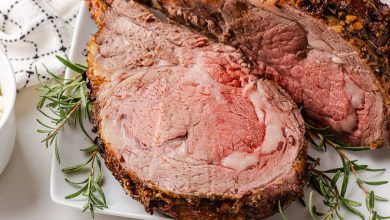White Wheat Bread – Nutritional Information & Ingredients
Description
White wheat bread is a staple in many households, providing a versatile base for a variety of sandwiches, toasts, and more. Made with wheat flour, this bread offers a wholesome balance of carbohydrates, fiber, and protein, along with a rich nutritional profile that can complement various diets. It is especially noted for its high calcium and iron content, which supports bone health and overall well-being.
Nutritional Information (Per Serving)
| Nutrient | Amount per Serving |
|---|---|
| Energy | 238 kcal |
| Protein | 10.66 g |
| Total Fat | 2.15 g |
| Saturated Fat | 0.63 g |
| Carbohydrates | 43.91 g |
| Dietary Fiber | 9.2 g |
| Sugars | 5.0 g |
| Calcium | 684 mg |
| Iron | 4.89 mg |
| Magnesium | 26 mg |
| Phosphorus | 103 mg |
| Potassium | 127 mg |
| Sodium | 478 mg |
| Zinc | 0.95 mg |
| Copper | 149 mcg |
| Manganese | 0.634 mg |
| Selenium | 16.1 mcg |
| Vitamin C | 0.0 mg |
| Thiamin (Vitamin B1) | 0.51 mg |
| Riboflavin (Vitamin B2) | 0.255 mg |
| Niacin (Vitamin B3) | 4.455 mg |
| Vitamin B6 | 0.08 mg |
| Folate (Vitamin B9) | 78 mcg |
| Vitamin B12 | 0.0 mcg |
| Vitamin A | 0.0 mcg |
| Vitamin E | 0.38 mg |
| Vitamin D2 | 0.0 mcg |
Allergen Information
White wheat bread typically contains wheat and gluten. If you have allergies or sensitivities to these ingredients, it’s crucial to check the packaging or consult the bakery for specifics on cross-contamination risks. For individuals with gluten intolerance or celiac disease, opting for gluten-free alternatives is recommended.
Dietary Preferences
- Vegetarian-Friendly: This bread is suitable for a vegetarian diet as it does not contain any animal-derived ingredients.
- High in Fiber: With 9.2g of fiber per serving, this bread is a good choice for those looking to increase their dietary fiber intake for digestive health.
- Low in Fat: At just 2.15g of total fat per serving, this bread can be part of a low-fat diet.
- Moderate Protein: At 10.66g of protein per serving, it can help in building muscle and maintaining body tissue.
Advice for Consumption
White wheat bread can be enjoyed in a variety of ways – from making a classic sandwich to being toasted and served with your favorite spreads. Its high calcium content also makes it a good option for those looking to support bone health. For maximum benefit, consider pairing this bread with protein-rich toppings such as eggs, lean meats, or plant-based spreads for a balanced meal. Additionally, those who are sensitive to sodium might want to be mindful of its sodium content (478mg per serving).
Conclusion
White wheat bread is not only a delicious and versatile ingredient but also provides an impressive array of essential nutrients. Whether you’re looking for a source of fiber, calcium, or iron, this bread fits seamlessly into a balanced diet. Always consider any dietary restrictions, and enjoy it as part of a varied and nutritious meal plan.










